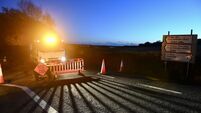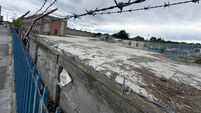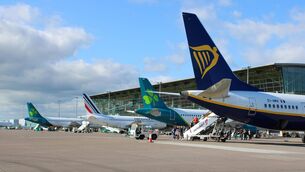National research vessel gives harbour clean bill of health
Two groups of 11 transition year students from Douglas Community College and Presentation College in Cork boarded the RV Celtic Explorer at Horgan’s Quay last week and cruised around the inner harbour as part of the Marine Institute’s outreach programme. Working alongside the institute’s new Integrated Marine Exploration (IME) team and scientists from University College Cork (UCC), they collected a range of water and seabed samples.
Andy Wheeler, a senior lecturer in UCC’s department of geology, said the harbour waters are in pretty good shape. “It is an estuary and no estuary is completely clean, but it’s in good shape overall. There are no major alarm bells ringing.”
The students used the ship’s wet lab to dissect fish and establish their ages by extracting and dissecting otoliths — tiny bones in the ear. They also measured the temperature and salinity of water at different depths, and learned how 3D maps of the seabed are created using the ship’s latest acoustic technology.
The purpose of the cruise was to raise awareness of marine issues and to highlight the capabilities of the national research vessel.
Final year undergraduate students from UCC will board the ship today. They will use a combination of geophysical technology and sediment sampling equipment to map the harbour’s sea-bed and the animals that live there, using the data for a variety of college projects.
The IME programme brings together a team of experts including a geophysicist, a benthic ecologist, a sampling biologist and an oceanographer to provide dedicated training at sea for third level institutions.
They also provide research support to third level and industry research sectors.
The 65.5m Celtic Explorer has a gross tonnage of 2,425 tonnes and a maximum speed of 16 knots. It is powered by a dual diesel-electric system which allows it to operate virtually silently on electric power when conducting sensitive seismic or fish stock surveys.
It can accommodate 19 scientists and 12 crew for up to 45 days at sea and is capable of travelling to any ocean in the world. Its team has already undertaken survey work in the Arctic Circle and fish stock assessment in the Lesser Antiles.












